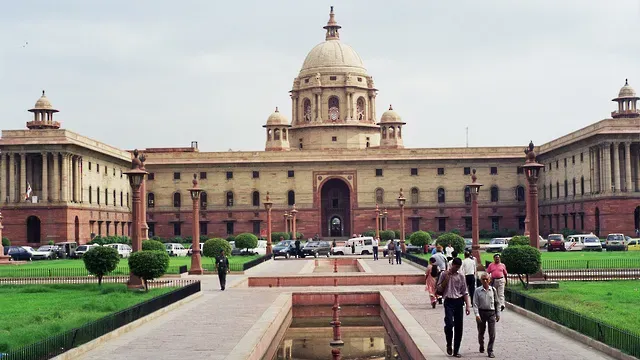The Weekend Read: India's energy transition under climate extremes
In conversation with energy access expert Namrata Ginoya

Welcome to this weekend’s edition of Lights On, a newsletter that brings you the key stories and exclusive intel on energy and climate change in South Asia.
If you are not a subscriber, you can sign up below, for free, or you can support my work by purchasing a membership:
After this season, when virtually every region of the planet was battered by unprecedented weather extremes, very few can now ignore the urgency of the climate crisis. And while heads of state get ready to negotiate global mitigation deals in November, countries and regions face an even more urgent challenge on the ground - adapting to the impacts that cannot be avoided and are becoming more brutal by the year.
This week I speak with Namrata Ginoya, an energy access specialist with the World Resources Institute (WRI) India, about how weather extremes are testing the energy system that India is rushing to modernise and decarbonise - and how they are forcing energy planners to rethink future infrastructure.
Lights On: The last week has seen a streak of extreme weather events around the world, from devastating floods in Europe and China to unstoppable wildfires in Siberia. India wasn’t spared, with violent floods killing more than 150 people across the country. What happens to these places’ energy systems when disaster strikes?
Namrata Ginoya: Let’s look back at a disaster that occurred earlier this year, Cyclone Tauktae. That storm took out a bunch of solar power stations as well as other generation stations. And because of that, the region was left without electricity for about a week, with the administration having no response mechanism in place. I would go so far as to say that, based on how much damage those plants actually saw, they had probably not considered heavy rainfall while designing them.
And post that, what people ended up doing was bringing diesel powered generators from the nearby district. So post disasters, a lot of time when there is a need to quickly fill an electricity gap, fossil fuels are still the first choice, and will remain the first choice for a while.
Can we therefore say that disasters also represent a setback for a country’s energy transition?
When we talk about dams, and hydropower in particular, there is a lot of discussion around how they affect the local ecology. There are a lot of studies around those problems, but there aren't enough studies around power plants other than hydro. There's this belief that solar and wind power plants, all of this is just clean energy, and their resilience state is never thought about. For example, if you consider wind power, a lot of wind farms would be affected by storm surges, sea level rise and cyclones. There is consideration of the current climate, but there isn't a focus on projected change. So if we look at current climate scenarios, your system will be resilient for the time being. But in the future, that same system will not work. And so for clean energy we don't see that foresight, even for coal power plants for that matter. We've done studies on how water availability will be a major issue for coal power plants, because a lot of them are located in areas which are water stressed. So, some of these considerations are currently disregarded.
This reminds me of the rock and ice avalanche that hit the Chamoli district, in Uttarakhand, last February. The disaster rekindled the conversation around dam planning in difficult terrains like the Himalayas.
So there are two things to consider. One is that if water levels are low, your power plant is not going to be working efficiently. You built this infrastructure which is so capital heavy, you need the resource which powers the system. And the second challenge is the extreme rainfall conditions or glacial bursts that we're seeing. And that would actually destroy huge parts of the infrastructure as we saw in Uttarakhand.
Both of these conditions need to be studied, but currently they are not. In addition, the Himalayas are a young mountain range. And unlike other mountain ranges, they're very much prone to landslides and vulnerable to collapse.
What would it take to create a more disaster resilient energy infrastructure?
In terms of risk mitigation, first and foremost, we need to do risk assessments for the energy sector specifically. And that includes looking at generation separately, looking at transmission and distribution, consumer demand, all of these things have to be looked at. And then the weather, which guides the day to day operations, and then of course there's climate change.
So there are certain adaptation measures that you could put in place right now. And then there would be certain strategies that you could undertake for the entire energy sector planning. That would include where you locate your generation systems as well, because a lot of places that are perfect right now would not be the location you want to consider in the long term. There's also the possibility of considering decentralised systems where you think that transmission and distribution would be particularly vulnerable due to heavy precipitation or storm conditions. Such locations would probably benefit from decentralised systems.
Decentralised solar and other types of local generation are often pitched as the silver bullet against the impacts of natural disasters. Is that always the case?
Centralised and decentralised systems have to be complementary. You cannot have decentralised systems everywhere. An example I would give is of two extreme areas: one is in Rajasthan, Jaisalmer, which is a desert ecosystem. There are very few people there and the cost of extending the power grid has been very high. And in fact, whenever there are sand storms, a lot of these transmission lines go down and they are repaired after months, not weeks.

So some of these areas with small villages could be powered by decentralised systems, because we know the losses that could occur there would be reduced tremendously with such a setup. Similarly in Assam, where the Brahmaputra river floods every year, there are a lot of river islands. Now you cannot have a transmission system which extends over the river to the river island. And so, those kinds of places would also benefit from decentralised systems.
But in extremely populated areas like Gujarat and [other parts of] Rajasthan the grid makes more sense. It shows that you need to design your system to be more resilient to the projected changes rather than the current issues.
And how would you increase the resilience of these systems in practice? Are there new materials or design practices that should be adopted?
In terms of transmission, there are really simple things that could be considered, for example if a place is prone to heavy rainfall, you use stainless steel materials to reduce corrosion in certain cases. Even cutting grass more frequently has helped.
In case of high temperatures, which we are going to see a lot of, you can increase the tension in the conductors or use steel instead of wood poles to start with. When flood or sea level rise occurs, in some cases there's no real solution, apart from relocating. But in case of a distribution system that you may have to place in locations that are vulnerable to water logging or flooding, you have to elevate those structures and improve their foundation. So simple civil engineering solutions are the best in certain cases.
Then there are situations where you have highly capital intensive infrastructure located near the seaside, and here you need to use natural infrastructure such as mangrove forests, in order to reduce the impact of storm surges of cyclones on the mainland infrastructure as much as possible. This principle applies to infrastructure of any type, but we do see a lot of damage to energy infrastructure on the coastline.
So if it's about protecting whatever is already there in terms of natural barriers such as mangroves, this would bring benefits to homes as well, not just energy systems.
When people talk about infrastructure, they will look at reducing damage to housing or road infrastructure. But I think all of these guys need to work together to build those barriers, so that it's not just the energy guys talking about protecting their infrastructure separately from the road infrastructure. And in fact, even with decentralised systems, one of the most important things to consider would also be access to these places, so you can intervene quickly in case of breakdown. When disasters hit, your ability to back up a lot of the local energy infrastructure depends on the presence of other infrastructure - like roads.
Are there any regulatory changes that could help India’s energy sector become more resilient to disasters?
The Power Grid Corporation of India has prepared a very exhaustive document on building climate resilience, but implementation is lacking. I would also add that the new clean energy infrastructure, including solar power plants, have been exempted from environmental impact assessment. And that is one of the worst things that could happen, because a lot of this infrastructure is being built on so-called wasteland, but these places are not wasteland. In certain cases these are grasslands, which are used by a lot of nomadic pastoralists for their livelihood.
And a lot of these also act as water storage areas during the monsoon season: they dry up during the summer season, but they are full during the monsoon season, helping replenish the aquifers. Now, if you end up building your solar power plants in such regions, there is 100 percent a possibility that if an extreme rainfall event occurs, then there would be damage to your plant. And on top of it, you're also affecting the natural ecosystem of that region.
That’s all for today! If you like what you read, hit reply and let me know what you would like to see more of. Ask me anything, I always reply.



